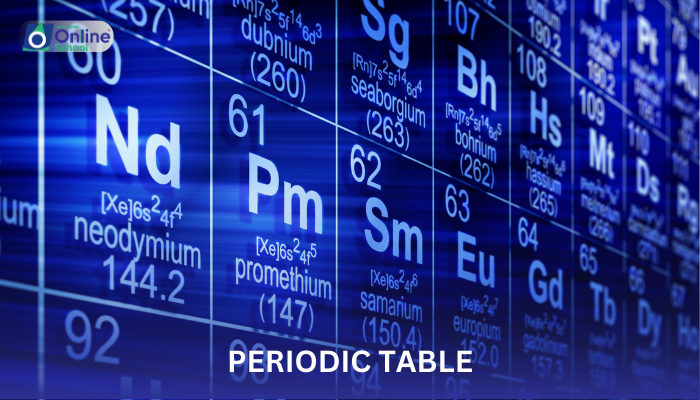
Learning Outcomes:
i. Understand the organization of the Periodic Table.
ii. Identify the different blocks in the Periodic Table: s, p, d, and f.
iii. Relate the arrangement of elements to their electronic configurations.
Introduction:
Welcome to the fascinating world of the Periodic Table! In this lesson, we will delve into the intricate organization of the Periodic Table, uncovering its secrets and unraveling the patterns that govern the behavior of elements. By the end of this journey, you will not only navigate the Periodic Table with ease but also comprehend the logic behind its arrangement.
i. The Organization of the Periodic Table:
The Periodic Table is like a roadmap for chemists, guiding us through the vast landscape of elements. Each element is uniquely positioned based on its properties, creating a systematic arrangement. The rows are called periods, and the columns are groups. This arrangement is not arbitrary; it's a reflection of the electronic structure of atoms.
ii. Blocks in the Periodic Table:
s Block:
The first block we encounter is the s block, which consists of two groups – Group 1 and Group 2. Elements in the s block have their outermost electrons in the s orbital. For example, sodium (Na) and magnesium (Mg) are part of the s block.
p Block:
Move over to the right, and you'll find the p block. This block encompasses groups 13 to 18. Elements in the p block have their outermost electrons in the p orbital. Oxygen (O) and fluorine (F) are part of the p block.
d Block:
Nestled in the middle, the d block consists of transition metals. These elements have their outermost electrons in the d orbital. Iron (Fe) and copper (Cu) are part of the d block, showcasing their unique properties.
f Block:
The f block, often placed below the main body of the Periodic Table, includes the lanthanides and actinides. These elements have their outermost electrons in the f orbital. Uranium (U) and neptunium (Np) are notable members of the f block.
iii. Electronic Configurations:
Understanding the electronic configurations of elements is crucial. It determines their placement in the Periodic Table and provides insights into their chemical behavior. For instance, the electronic configuration of helium (He) is 1s², signifying its position in the first row of the s block.
Congratulations! You've embarked on a journey into the heart of the Periodic Table, unraveling its mysteries and gaining valuable insights into the arrangement of elements. As you continue your exploration of chemistry, remember that the Periodic Table is more than just a chart – it's a blueprint that helps us make sense of the rich diversity of the elements. Stay curious, and let the periodicity of the elements guide your scientific endeavors.